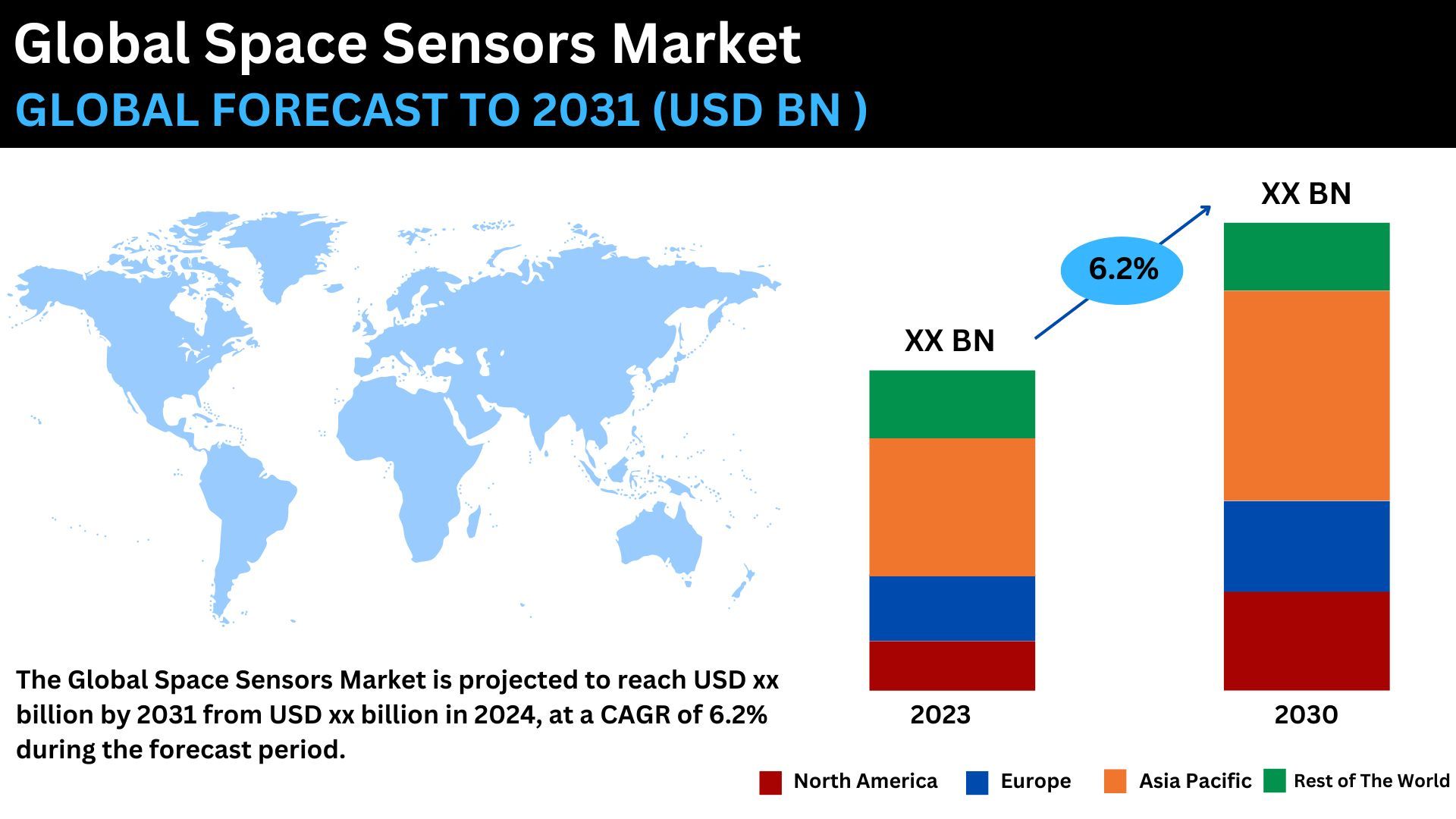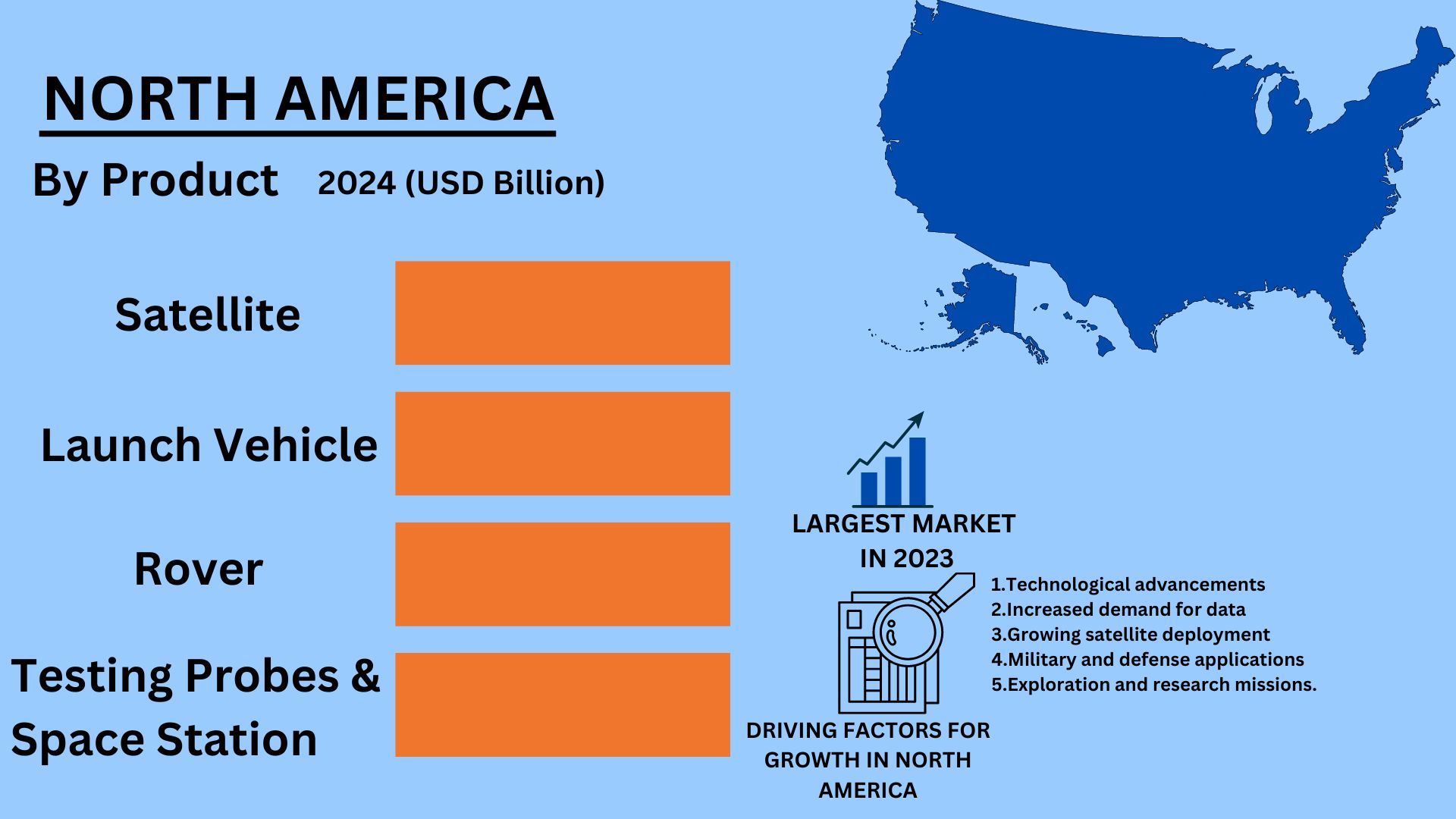Global Space Sensors Market
EMI10108 ID | Aerospace & Defence | March-2024 | 284 PagesThe Global Space Sensors Market in terms of revenue was estimated to be worth USD XX billion in 2023 and is poised to grow at a CAGR of 6.2% from 2024 to 2031.

The "Space Sensors Market" refers to the industrial segment that deals with the research, development, manufacturing, and application of sensors made specifically for space applications. These sensors provide functions like communication, navigation, Earth observation, and scientific research. They are crucial components of many space systems, including satellites, spacecraft, and space stations. They include a wide range of technological products, including spectrometers, image sensors, radar systems, and temperature sensors. Due to advancements in space exploration, growing demand for satellite-based services, and growing interest in space-based research, the market for space sensors is growing rapidly. Research facilities, aerospace companies, and governmental organizations are significant players in this market that promote the advancement and expansion of space sensor technology.
Market Dynamics for Space Sensors
Drivers: The space sensor market is growing due to advancements in satellite technology.
There are particular difficulties in ensuring data security and privacy in space sensor applications. Secure data transfer is challenging because of the great distances and inadequate communication infrastructure. In addition, hardware integrity may be compromised by the hostile space environment. It is crucial to make sure encryption mechanisms are strong enough to withstand potential attacks. Furthermore, the sensitive nature of the data that is gathered gives rise to privacy problems, which call for strict access controls and anonymization methods. Maintaining the security of sensitive data in space missions requires striking a balance between these variables.
Restraints: Exorbitant Startup and Running Expenses Restrict Market Expansion for Space Sensors
The high upfront and ongoing expenditures of space sensors limit the market's potential growth. When it comes to businesses and governments wanting to invest in space technology, these costs provide major obstacles. The significant financial investment necessary for the creation, deployment, and upkeep of space sensors limits the market's growth and uptake. By tackling these financial obstacles with technical innovations, economical production techniques, and cooperative efforts, the market may expand and space sensors could be used for more applications.
Opportunities: Space sensor providers can benefit greatly from the emergence of small satellite constellations.
The emergence of small satellite constellations presents lucrative opportunities for space sensor providers. These constellations, comprising multiple small satellites working in tandem, offer enhanced capabilities for Earth observation, communications, and other applications. Space sensor providers stand to benefit by supplying advanced sensors tailored for these small satellites, enabling improved data collection and analysis. As demand for small satellite constellations continues to grow across various industries, the market potential for space sensor providers is significant.
Challenges: There are difficulties in ensuring data security and privacy in space sensor applications.
In space sensor applications, protecting privacy and securing data present significant issues. Concerns of data integrity and confidentiality are heightened by the extreme conditions and great distances of space travel. Strong encryption, authentication, and secure transmission methods are required because radiation, communication lags, and resource constraints make these problems worse. Strict laws and international collaboration are also necessary to handle moral and legal ramifications and guarantee the security of private data gathered by space sensors.

Ecosystem of the Global Space Sensors Market
Among the leading businesses in this sector are reputable producers and suppliers of space sensor products. These businesses have been on the market for a while and have a strong worldwide sales and marketing network, as well as a broad product portfolio, organic and inorganic strategies. Notable businesses include Honeywell International Inc. (U.S.), InnaLabs Ltd. (Ireland), Raytheon Technologies Corporation (U.S.), TE Connectivity (Switzerland), Teledyne Technologies Inc. (U.S.), Ametek Inc. (U.S.), L3Harris Technologies Inc. (U.S.), Safran S.A. (France), and Others.
Report Scope: Space Sensors Market
| Report Metric | Details |
|---|---|
| Market Size (Years) | 2020–2031 |
| Base Year Considered | 2023 |
| Forecast Period | 2024–2031 |
| Forecast Units | Million/Billion (USD) |
| Segments Covered | By Type, Platform, End user, and Region |
| Geographies Covered | North America, Europe, Asia Pacific, Rest of the World |
| Companies Covered | ABB Ltd. (Switzerland), Airbus S.A.S (Netherlands), Ametek Inc. (U.S.), L3Harris Technologies Inc. (U.S.), Safran S.A. (France), Honeywell International Inc. (U.S.), InnaLabs Ltd. (Ireland), Raytheon Technologies Corporation (U.S.), TE Connectivity (Switzerland), Teledyne Technologies Inc. (U.S.), and Others. |
